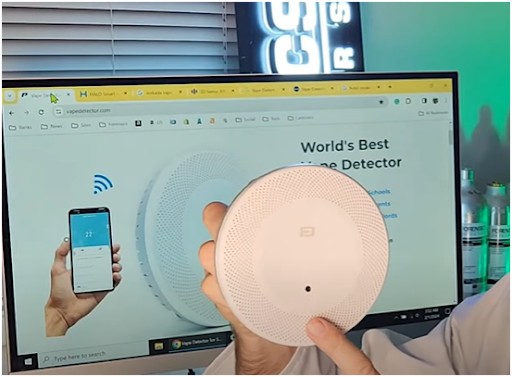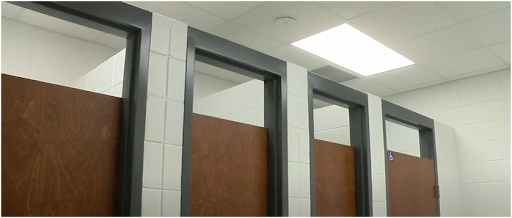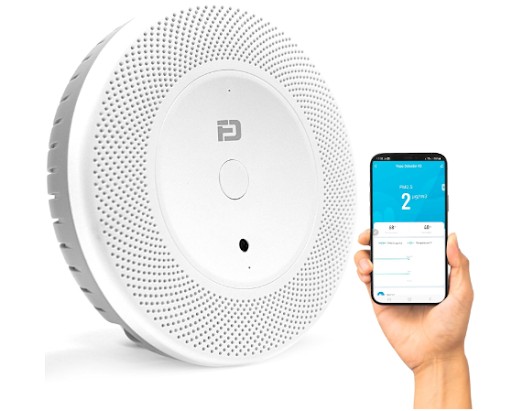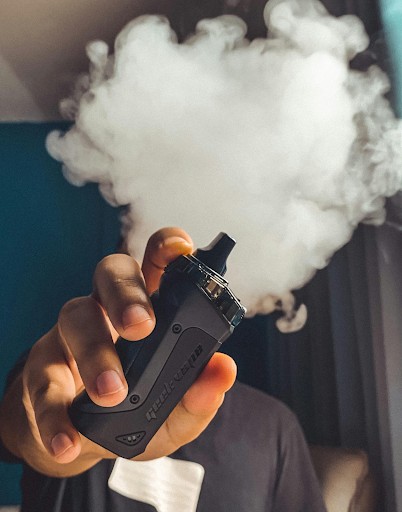Now Reading: How Do Vape Detectors Work? A Deep Dive into Their Role in Schools and Beyond
-
01
How Do Vape Detectors Work? A Deep Dive into Their Role in Schools and Beyond
How Do Vape Detectors Work? A Deep Dive into Their Role in Schools and Beyond

I’ll admit it—I’ve been on the tech trend train for years. There’s something so satisfying about learning how new gadgets can shift the way we experience the world.
Recently, I stumbled upon an interesting question: how do vape detectors work?
Sure, we all know the basics of e-cigarettes and vaping, but how does technology step in to monitor these habits, especially in places like schools?
Well, let me tell you, the world of vape detectors is more complex (and fascinating) than I ever imagined.
These smart little gadgets have a lot to offer when it comes to keeping our air safe and stopping the spread of vaping—whether it’s in the classroom or beyond.
What Exactly Are Vape Detectors?
 Image source- Forensics Detectors
Image source- Forensics Detectors
You know those high-tech devices used to keep an eye on air quality or track your car’s engine?
Vape detectors operate on a similar level, but with a specific focus: detecting aerosolized particles and chemicals that make up the vapor in e-cigarettes.
When I first heard of vape detectors, I envisioned an old-school alarm that just went off every time someone took a puff. But no, they’re far more advanced and nuanced than that.
At their core, vape detectors are devices designed to sense the presence of vaping activities.
They use an intricate mix of particle sensors, gas sensors, and chemical sensors that detect specific substances released into the air when someone vapes.
So, it’s not just about sniffing out smoke—these detectors look for very specific chemical signatures, such as nicotine, propylene glycol (PG), and vegetable glycerin (VG), which are commonly found in vape aerosol.
How Do Vape Detectors Work in Schools?
 Image source- WAAY 31 News
Image source- WAAY 31 News
If you’re asking how do vape detectors work in schools, the answer is multi-faceted. Schools, as you may know, have become a battleground for addressing vaping. Students, sneaky as they are, will often try to hide their e-cigarettes in bathrooms, hallways, or even classrooms, creating a serious concern for both health and safety.
Vape detectors for schools are built with this unique challenge in mind. These detectors can be placed in bathrooms, hallways, or other areas where vaping might occur. By monitoring the air for tiny particles and chemical traces left behind by the vapor, the detectors alert staff when they detect a specific concentration that exceeds pre-set thresholds.
So, what makes school vape detectors so effective? First, they use particle sensors that work by detecting vapor particles through light scattering technology.
When vape particles pass through, they scatter a laser beam, and a sensor picks up the change in light. This is one of the most common ways to detect vaping, and it’s impressively accurate.
Then, there are gas sensors that target chemicals like nicotine or PG, which are pretty much synonymous with vaping.
These sensors work by analyzing the air and reacting to specific gas molecules, ensuring that a “false alarm” doesn’t go off every time someone uses deodorant or walks through a humid space.
But that’s not all. Many of these detectors also include temperature and humidity sensors because, believe it or not, vaping can create slight changes in both of these factors. This helps them distinguish between environmental factors and actual vaping activity.
How Well Do Vape Detectors Work?
 Image source- Amazon
Image source- Amazon
Now, I know what you’re probably thinking: How well do vape detectors work?
Well, let me assure you, they’re pretty effective, especially when it comes to school environments.
They’re not flawless—no tech is—but the accuracy of school vape detectors has drastically improved over time.
The real magic lies in their ability to differentiate vaping from other activities that might trigger false alarms. Think steam from a shower or aerosol from a can of hairspray.
These devices don’t just detect vapor and send out a noisy alarm—they also connect to apps or security systems that alert staff in real-time.
The result? Schools can respond faster and keep things under control. It’s a game-changer in the ongoing battle against vaping in schools.
What Happens After a Vape Detector Detects Activity?

Once a vape detector has been triggered, the fun doesn’t end there. Here’s what happens next:
- Real-time Processing: The detector’s microprocessor processes data instantly. It knows the difference between real vaping and other aerosol activities, so it only sends an alert if the levels of vapor are above the pre-programmed threshold.
- Alert Systems: When the detector goes off, you’ll likely hear an alarm (or see a flashing LED light) depending on the model. More advanced versions send notifications to staff through apps, emails, or texts, so they’re aware of the situation without having to physically check the area.
- Smart Alerts: Some vape detectors are connected to the cloud, which allows them to send instant alerts to administrators and security personnel, ensuring a quick and organized response. This adds a level of convenience and efficiency that traditional monitoring methods just can’t offer.
Can Vape Detectors Work Everywhere?
While vape detectors for schools have received a lot of attention, these devices are not exclusive to educational institutions.
Businesses, public restrooms, and even hospitals can benefit from installing vape detectors. But of course, the success and effectiveness vary based on placement and sensitivity levels.
Vape detectors work best when they’re properly installed and configured, so while they’re highly effective in preventing vaping in restricted areas like schools, they can also be a great tool in other locations where vaping is banned or unwanted.
FAQ Section: Answers to Your Burning Questions
Q1: Are vape detectors easy to install?
Yes! Most vape detectors are designed to be user-friendly. You don’t need to be a tech wizard to set them up.
Whether you’re installing them in schools or offices, they typically come with straightforward installation instructions, and many can be synced to a cloud service for easy monitoring.
Q2: How do I choose the right vape detector for my school?
When picking a vape detector for schools, you’ll want to consider the size of the area, the type of technology (particle, gas, or chemical sensors), and whether it integrates with other monitoring systems. Look for detectors that offer real-time alerts and easy-to-understand analytics.
Q3: Can vape detectors detect all forms of e-cigarettes?
Vape detectors are built to detect the typical chemicals found in e-cigarettes, so they’re generally effective for most devices. However, newer, less traditional vaping devices may require more advanced detectors with specialized sensors.
Q4: Do vape detectors only work for nicotine-based products?
Not at all! While nicotine is a key target, most vape detectors also detect other substances commonly found in e-liquids, like propylene glycol and vegetable glycerin. This makes them more versatile in identifying various forms of vaping.
Final Scoop Before You Jump In
Vape detectors are more than just futuristic gadgets—they’re helping to reshape how we monitor vaping in schools, public spaces, and businesses.
With their ability to detect even the faintest trace of vapor, these devices are proving to be essential tools in the fight against e-cigarettes.
Whether you’re a school administrator or simply a curious tech enthusiast, it’s clear that these devices are here to stay.
Pro tip: If you’re looking to install vape detectors at your school, business, or organization, make sure to combine them with educational efforts.
Technology can do a lot, but it’s most effective when paired with awareness and clear policies.













